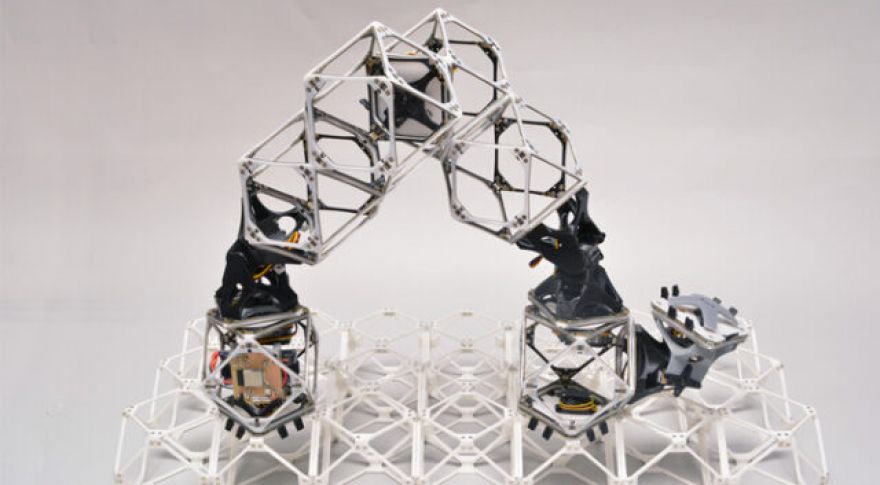
MIT Is Working on Self-Assembling Robots
Today, humans build robots, but in the future, robots could be programmed to build more of themselves. Researchers at MIT’s Center for Bits and Atoms (CBA) have created robotic subunits called “voxels” that can self-assemble into a rudimentary robot, and then collect more voxels to assemble larger structures or even more robots.
The researchers, led by CBA Director Neil Gershenfeld, concede that we’re still years away from a true self-replicating robot, but the work with voxels is answering some vital questions that will help us get there. For one, the team has shown that it’s feasible to make the assembler bot and the structural components of whatever you’re building can be made of the same subunits — in this case, voxels.
Each robot . They use small but powerful magnets to latch onto additional subunits, which they can use to assemble new objects or make themselves larger. Eventually, a human operator might simply be able to tell these self-assembling robots what they want to be built, allowing the machines to figure out the specifics.
For example, if one robot isn’t enough to build the required structure, it can make a copy of itself from the same voxel components to split the work. When building something large, the robots could also decide to make themselves bigger and thus more efficient for the task. It could also be necessary for large robots to split into smaller ones for more detailed work.
The voxels (a term borrowed from 3D modeling) are based on components developed for previous MIT experiments. However, those voxels were simply structural pieces. The voxels used in the new research have been enhanced with the ability to share power and data when connected. The add-on voxel components don’t have any moving parts, though. All the movement and smarts come from the base units, which are like feet that allow the robot to inch along the magnet-studded substrate.
A large part of this research is simply refining the algorithms that govern how the robots grow and replicate, ensuring they can work together without crashing into each other. Although computer simulation shows the system could build larger objects (and more robots), the current hardware is limited. The magnetic connections are only strong enough to support a few voxels, but the team is developing stronger connectors that will allow one robot to build another. By tweaking the strength of the actuator force and joint strength, the researchers believe they can build on this success.
Now read: